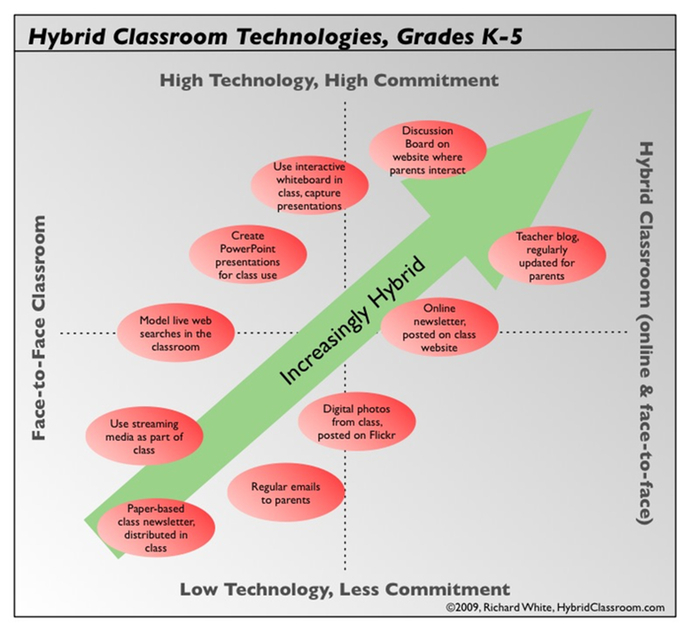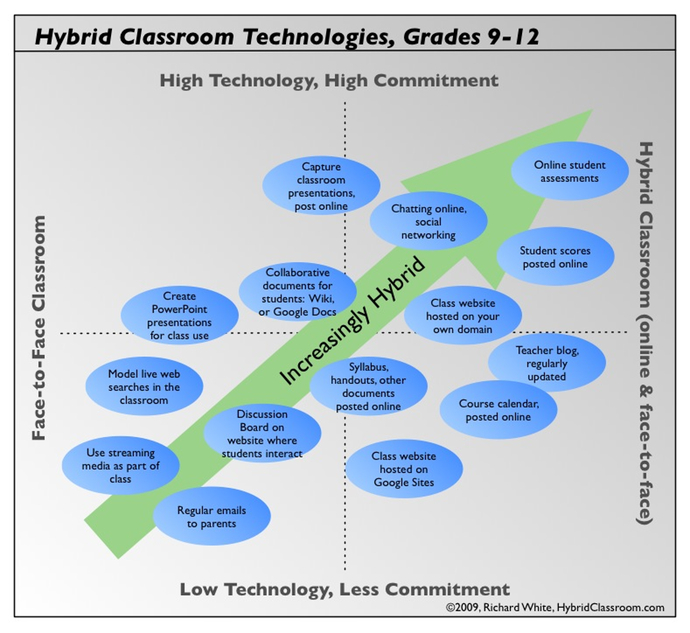Hybrid Classroom Projects
2009-10-24
So, let’s say you’ve decided you want to “Go Hybrid”: you want to add a little tech into what you’re doing. There are a lot of reasons why you might want to do this:
1. You’re a geek and this is how you roll.
2. You want to be one of the cool kids.
3. You think being high-tech will make you look good.
4. You think your students will like it.
5. Your boss is making you do it.
These are all more-or-less legitimate reasons for wanting to advance your skills, but the best one is this:
6. You have an educational problem, and appropriate technology will provide a solution.
I mean, I love a new shiny gadget as much as the next guy or gal, but the technology is a tool, not an end in itself. It’s important for us to keep that in mind.
Email became popular not because it was cool, but because it was a powerful, fast, and essentially free tool that allows us to communicate more efficiently than we can by postal mail or telephone.
Likewise, my first website (back in 1998!) wasn’t designed to be cool, but rather to save me some trouble. It initially featured three pages: one with answers to current homework problems that students could use to check their work, one with review problems for the upcoming test, and one with a table of the students’ current grades in the course. It was my fervent hope that those three pages would reduce the amount of time I would have to spend going over homework in class, photocopying review packets (the photocopiers at that school were notoriously unreliable), and printing out individual grade reports for students each week, and I’m happy to say that that hope became reality.
But let’s get back to you. You want to incorporate a little more high-tech into your classes, and–ultimately–move a little of that high-tech online. Where does one begin?
The charts below may give you some ideas. There are two–one for grades K-5, and one for grades 9-12, and grades 6-8 and university are just variations on these. Each chart is organized along two axes. The x-axis runs from normal Face-to-Face teaching on the left to Hybrid (combined face-to-face and Internet-based) teaching on the right. The y-axis runs from easy, beginner stuff at the bottom to more advanced, higher-tech stuff at the top. And in general, as one advances and becomes more Hybrid, one moves from the lower left to the upper right of the chart.
It goes without saying that the charts list just a few, general ideas. There are many other things you can do, but if you’re not sure where to begin, consider starting somewhere on the lower-left and see how that goes.
We’ll be talking about some of the items on these charts as we continue the discussion, but if you’re the kind who likes to work ahead, go ahead and get started. Pick a strategy, and make it happen!

